Enhance customer experience with Sentiment-driven insights in Jira Service Management
As organizations scale, the quality of internal support becomes instrumental in employee satisfaction and productivity. Jira Service Management (JSM) now offers customer sentiment analysis—powered by Rovo (formerly Atlassian Intelligence)—that can be strategically applied across the employee lifecycle to foster more empathetic, responsive, and efficient internal support.
In this tutorial, we’ll show how Elements Overview can leverage the sentiment analysis associated with customer requests to gain sentiment-driven insights into a broader Employee Experience Management (EXM) framework to empower support agents, HR, IT, and service teams.
🧭 Objectives
By the end of this guide, you will be able to:
Understand how sentiment metadata can elevate internal service delivery.
Apply three actionable use cases to support teams within the employee lifecycle.
Build EXM strategies using sentiment trends, patterns, and proactive alerts.
🛠️ Prerequisites
Jira Service Management Premium or Enterprise Plan
Rovo enabled
Sentiment analysis feature toggled on from the Project Settings
Elements Overview installed
🧩 Background
What is sentiment analysis in JSM?
Automatically classifies user tone (Positive, Neutral, Negative) on incoming tickets and comments, helping agents triage, prioritize, and communicate with empathy.
Why it matters for EXM?
Support interactions are touchpoints in the employee journey—their emotional tone can reveal underlying friction points in IT, HR, or operations. By surfacing sentiment trends, we can proactively improve service experience and reduce frustration.
💼 Use Case 1: Viewing past issues from the same reporter with negative sentiment
Scenario: An employee submits a ticket about VPN access. The agent sees that this person has submitted three other tickets recently—two marked Negative.
✅ Benefits:
Recognize long-standing frustrations or unresolved issues
Adjust tone to acknowledge prior friction ("Thanks for your patience on this…")
Avoid repetitive solutions
🔧 How-To:
In Elements Overview:
From the Project Settings, configure the following Overview:
Focus:
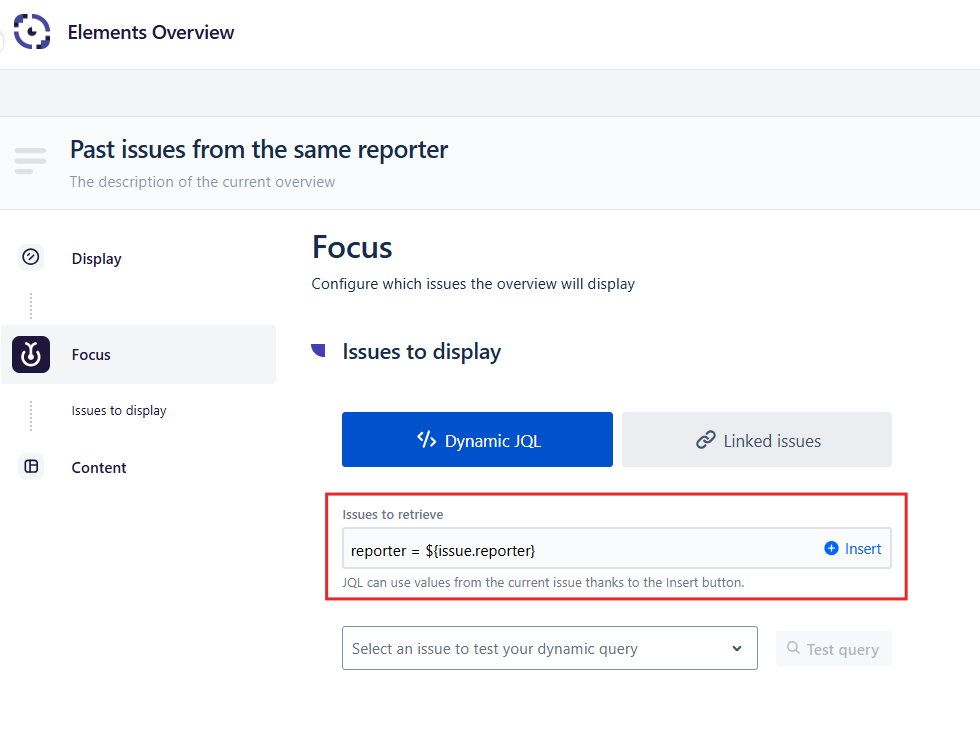
Content:
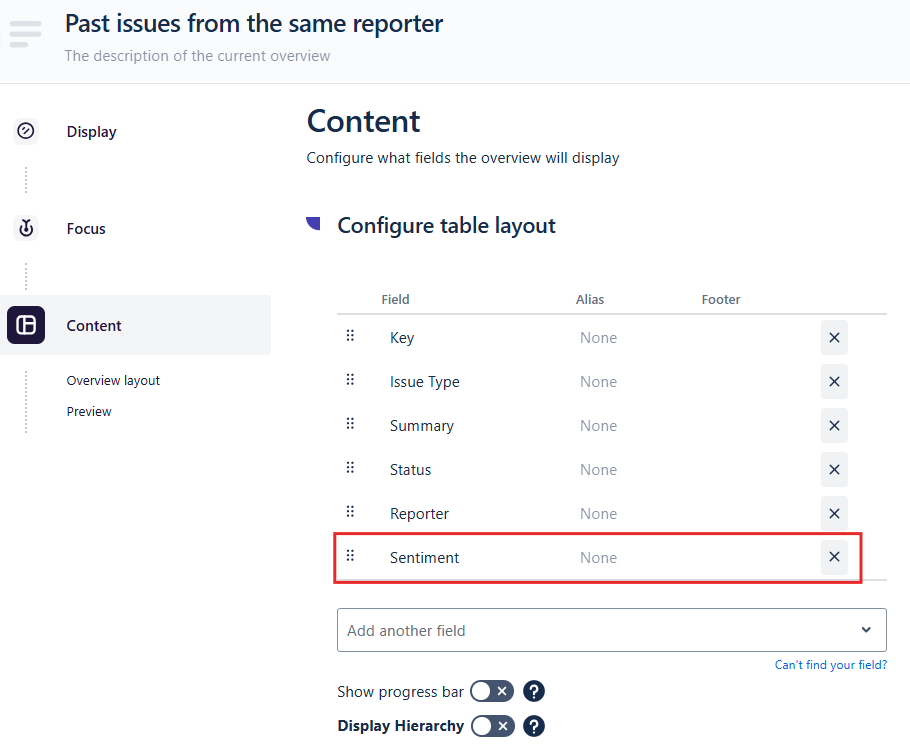
Result in the customer request:
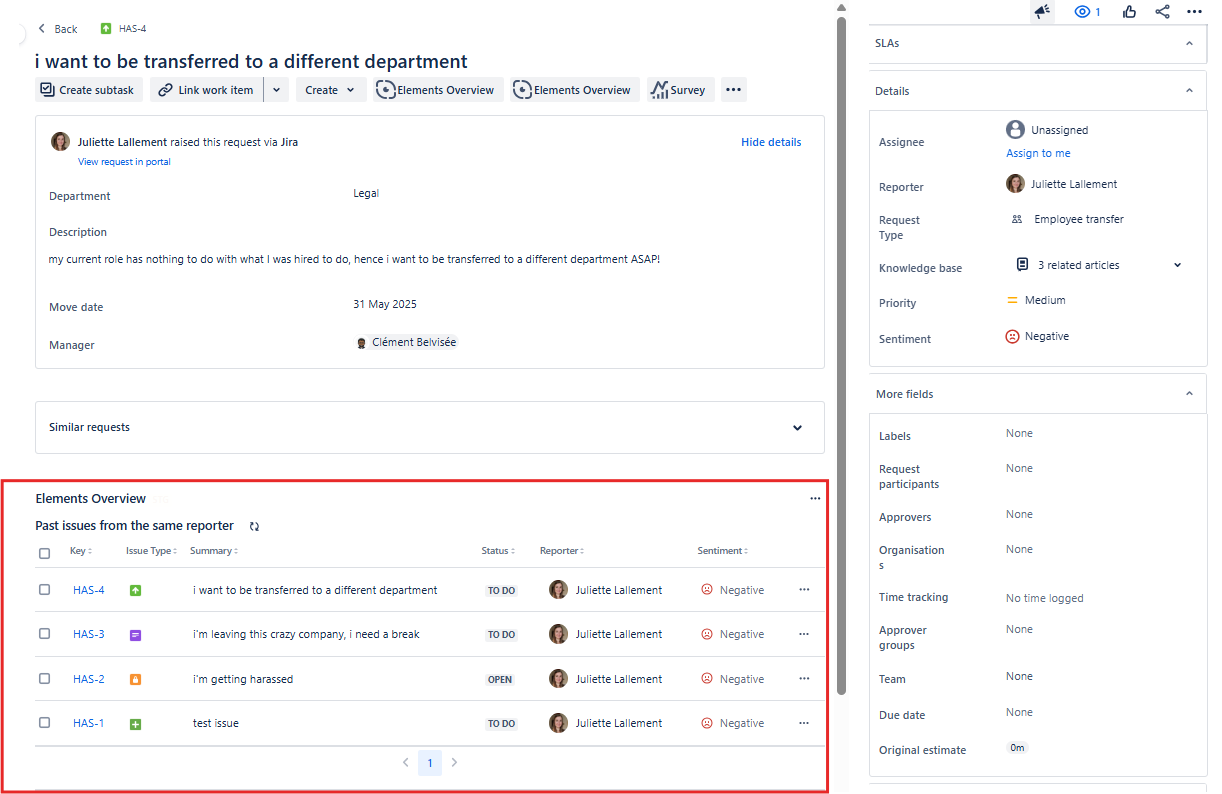
💬 Use Case 2: Surfacing similar sentiment issues
Scenario: A frustrated employee reports "Slack crashes after login." The sentiment is marked Negative. The system shows similar tickets from other employees also marked Negative with similar keywords.
✅ Benefits:
Identify major incidents early
Accelerate and simplify root cause analysis
Escalate recurring issues faster to IT/Product
🔧 How-To:
In Elements Overview:
From the Project Settings, configure the following Overview:
Focus:
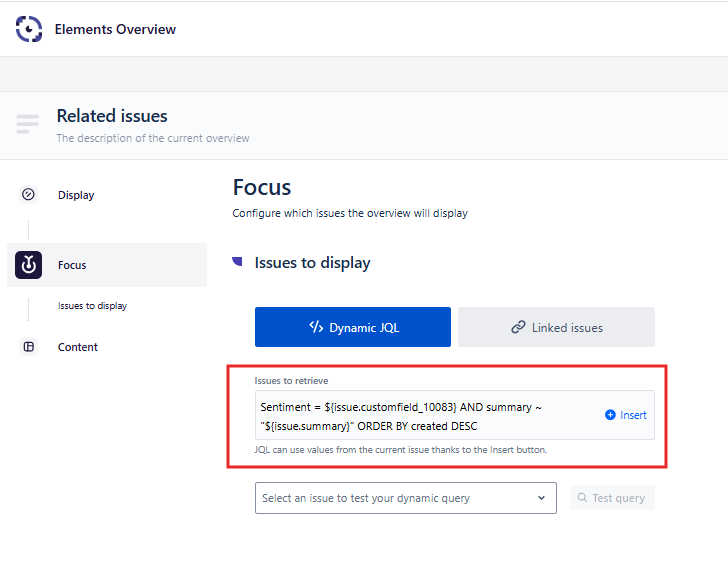
Content:
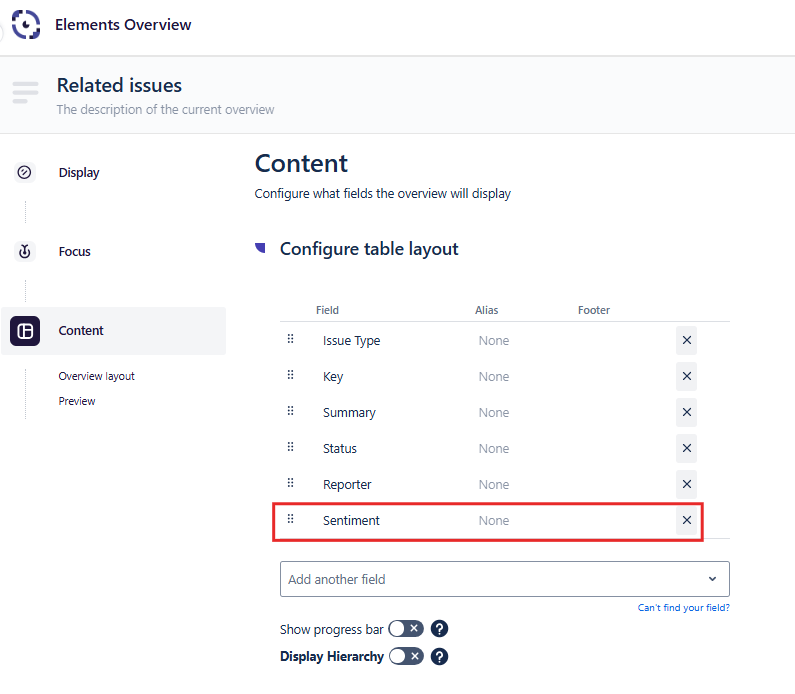
Result in the customer request:
.png?inst-v=132d3942-325f-4f7a-a960-e6598c8dd0ef)
📂 Use Case 3: Identifying internal services that may require improvements
Scenario: HR notices that “Remote Work Equipment Requests” have a spike in Negative sentiment over the past 45 days.
✅ Benefits:
Identify which internal services are pain points
Inform service design or process changes
Update documentation/self-service flows
🔧 How-To:
In Elements Overview:
From the Project Settings, configure the following Overview:
Focus:
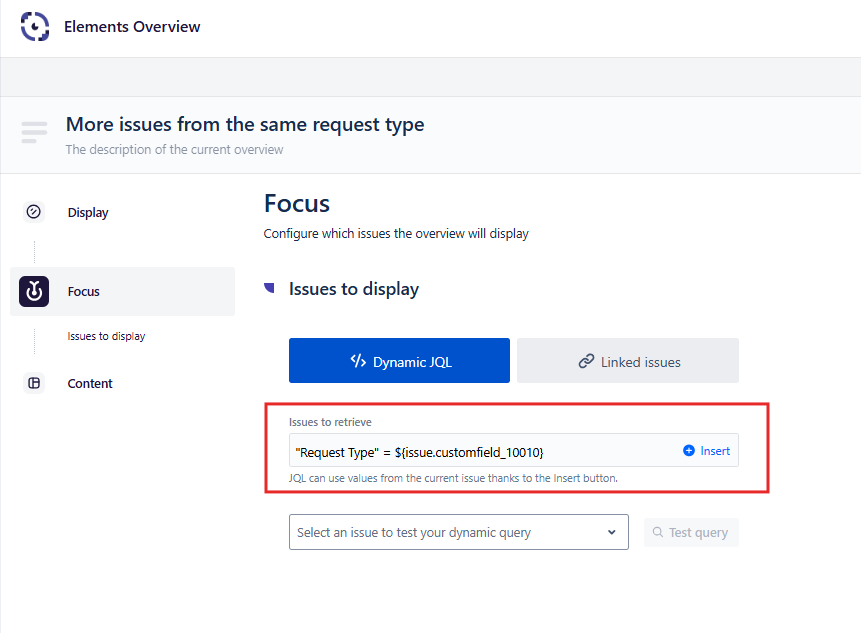
Content:
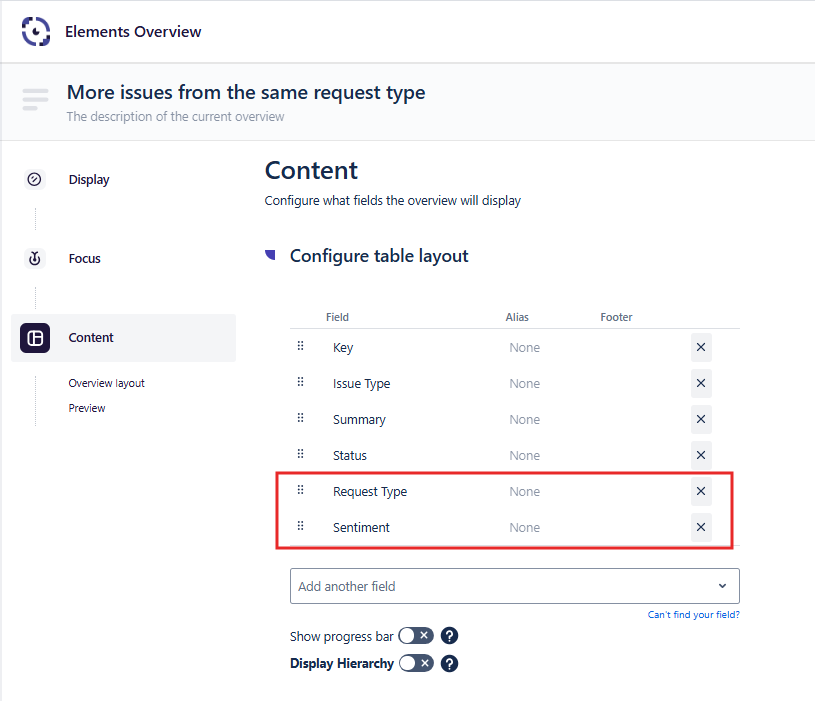
Result in the customer request:
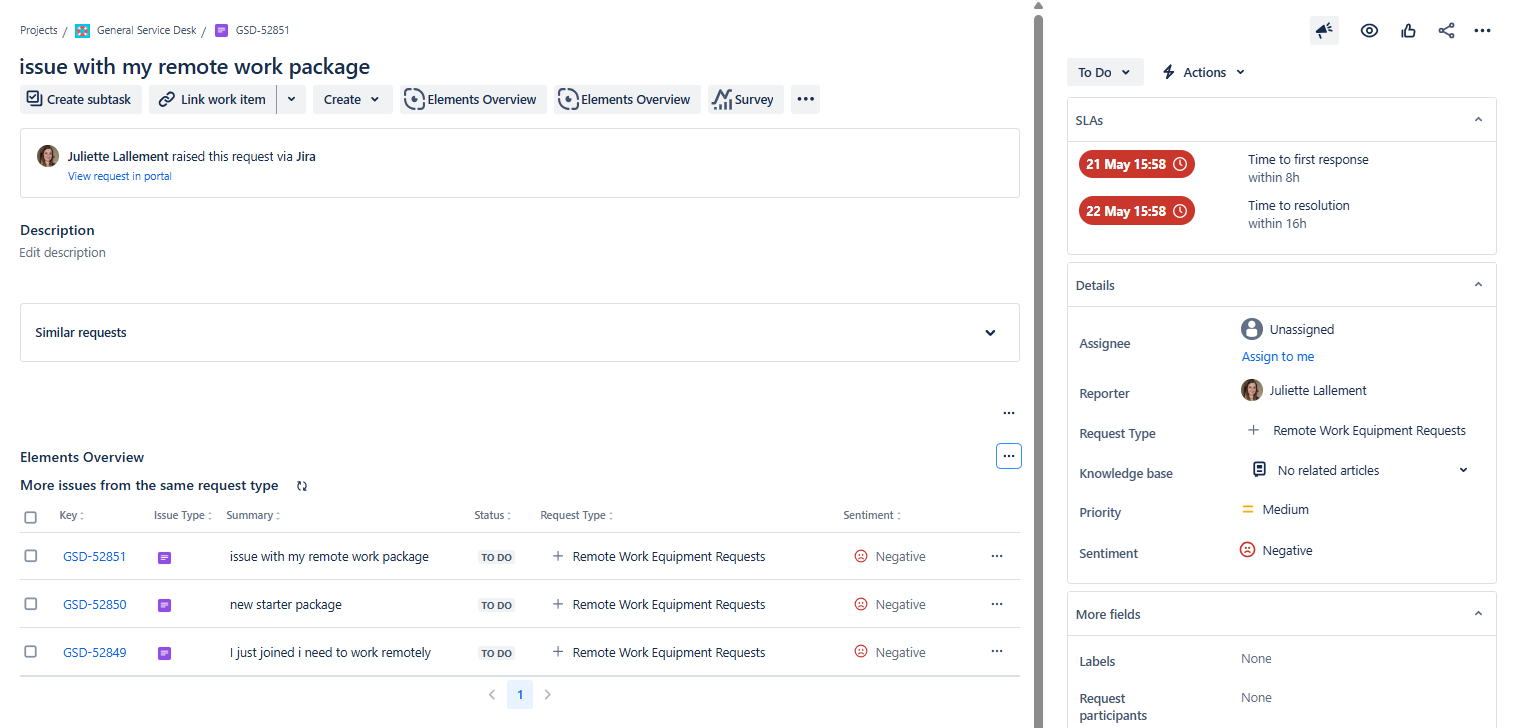
💡 Tips & Best Practices
Use sentiment as an indicator, not a judgment—always follow up with qualitative review.
Combine sentiment data with CSAT and survey responses for a holistic picture.
Train agents to acknowledge emotional tone without over-promising.
